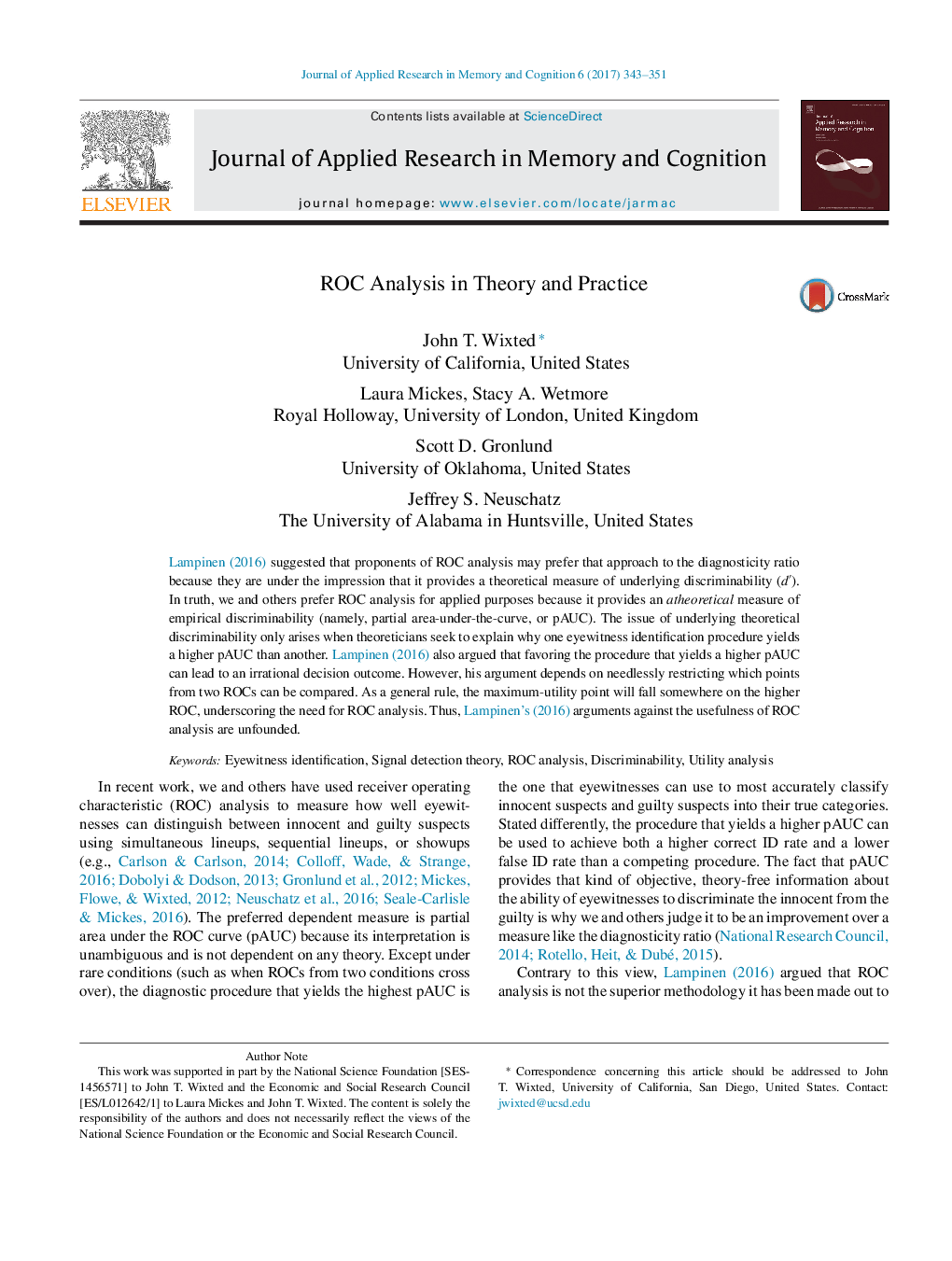| Article ID | Journal | Published Year | Pages | File Type |
|---|---|---|---|---|
| 5033975 | Journal of Applied Research in Memory and Cognition | 2017 | 9 Pages |
Abstract
Lampinen (2016) suggested that proponents of ROC analysis may prefer that approach to the diagnosticity ratio because they are under the impression that it provides a theoretical measure of underlying discriminability (dâ²). In truth, we and others prefer ROC analysis for applied purposes because it provides an atheoretical measure of empirical discriminability (namely, partial area-under-the-curve, or pAUC). The issue of underlying theoretical discriminability only arises when theoreticians seek to explain why one eyewitness identification procedure yields a higher pAUC than another. Lampinen (2016) also argued that favoring the procedure that yields a higher pAUC can lead to an irrational decision outcome. However, his argument depends on needlessly restricting which points from two ROCs can be compared. As a general rule, the maximum-utility point will fall somewhere on the higher ROC, underscoring the need for ROC analysis. Thus, Lampinen's (2016) arguments against the usefulness of ROC analysis are unfounded.
Keywords
Related Topics
Social Sciences and Humanities
Psychology
Applied Psychology
Authors
John T. Wixted, Laura Mickes, Stacy A. Wetmore, Scott D. Gronlund, Jeffrey S. Neuschatz,
